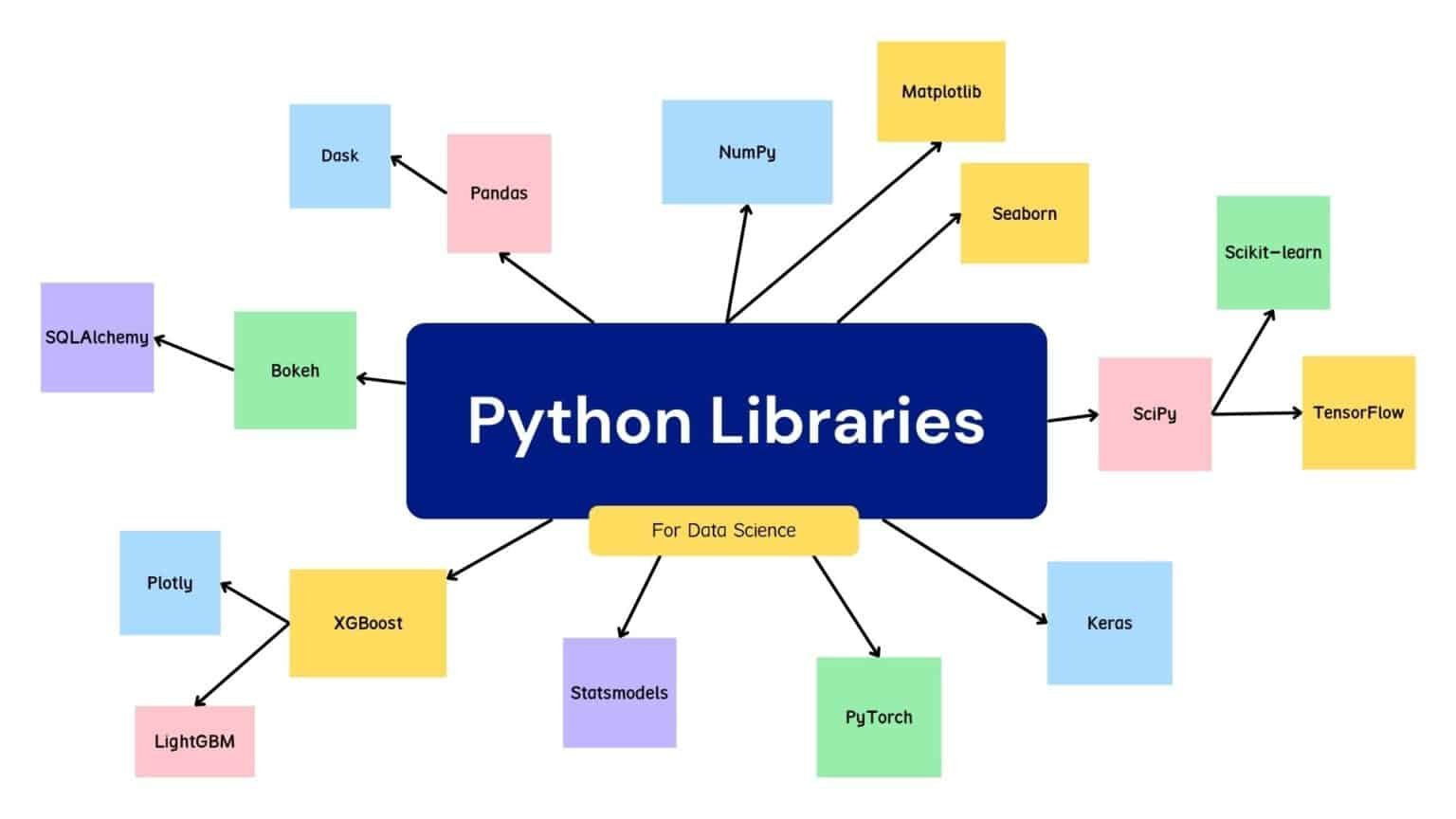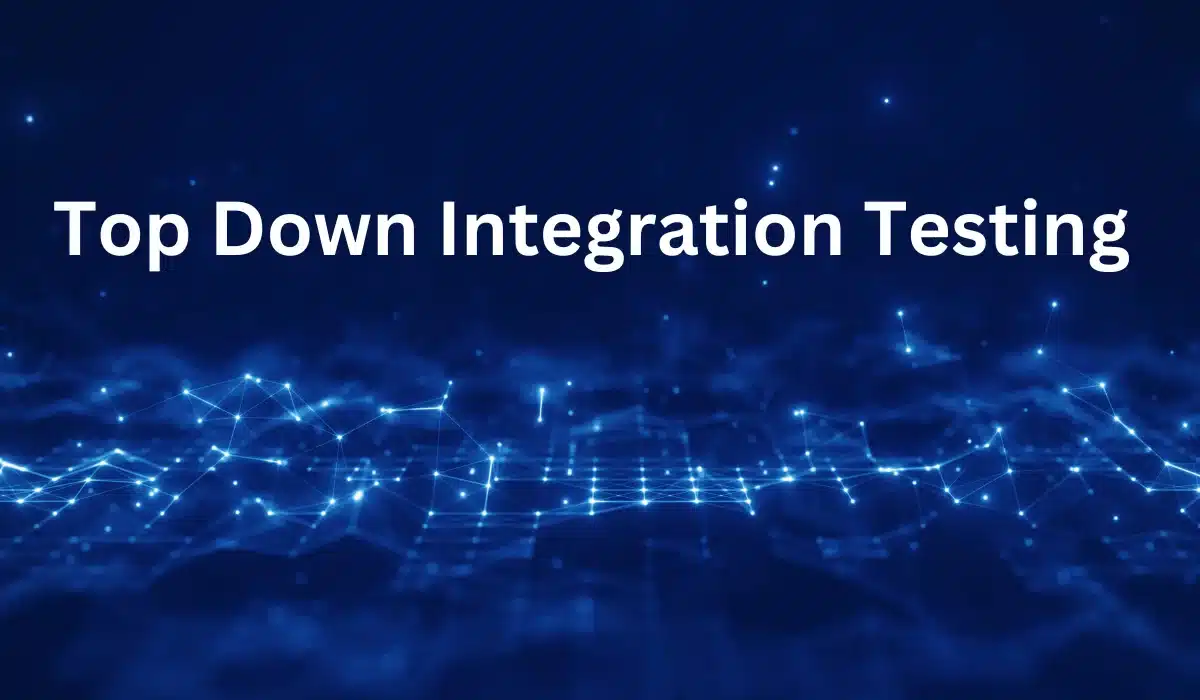Python Libraries for Data Science 2025
Top 20 Python Libraries for Data Science 2025
Python has become one of the most popular languages for data science due to its simplicity and the vast ecosystem of powerful libraries it offers. From data manipulation and statistical analysis to machine learning and visualization, these 20 libraries are essential tools for tackling a wide range of data-driven tasks in modern data science workflows.

1. NumPy
NumPy is a fundamental library in Python for numerical computing, providing support for large, multi-dimensional arrays and matrices. It also offers a broad range of mathematical functions to operate on these arrays, enabling efficient handling of numerical data. NumPy is often the backbone of other libraries used in data science and machine learning because of its speed and ability to handle large datasets with ease.
2. Pandas
Pandas is essential for data manipulation and analysis. It introduces powerful data structures like the Series and DataFrame, which make it easy to work with structured data such as tables. It supports operations on various data formats, including CSV, Excel, SQL, and JSON. Pandas allows users to clean, filter, transform, and analyze data, making it an indispensable tool for data preprocessing and analysis.
3. Matplotlib
Matplotlib is one of the most widely used libraries for data visualization. It allows users to create a wide variety of static, animated, and interactive plots such as line graphs, bar charts, scatter plots, and histograms. Matplotlib provides a high degree of customization for plots, making it suitable for both quick visualizations and detailed, publication-ready figures.
4. Seaborn
Built on top of Matplotlib, Seaborn is a Python library for statistical data visualization. It simplifies the process of creating beautiful and informative statistical plots, such as heatmaps, violin plots, and pair plots. Seaborn integrates well with Pandas DataFrames and offers a more high-level interface, making it easier to create complex plots with less code.
5. SciPy
SciPy is built on top of NumPy and extends its functionality by providing a wide range of algorithms and tools for scientific computing. It includes functions for optimization, integration, interpolation, eigenvalue problems, and statistical analysis. SciPy is an essential tool for performing advanced mathematical operations, making it widely used in scientific research and engineering.
6. Scikit-learn
Scikit-learn is a powerful and user-friendly library for machine learning in Python. It provides efficient tools for implementing a variety of machine learning algorithms, including regression, classification, clustering, and model selection. Scikit-learn is known for its simple API and well-documented functions, making it a go-to library for both beginners and experts in data science and machine learning.
7. TensorFlow
TensorFlow is an open-source framework for building and training machine learning models, especially deep learning models. It is widely used for developing neural networks and supports both CPU and GPU computation for faster performance. TensorFlow is known for its scalability and flexibility, making it suitable for both research and production environments.
8. Keras
Keras is a high-level neural networks API that runs on top of TensorFlow. It is designed to simplify the creation and training of deep learning models by providing an intuitive and easy-to-use interface. Keras allows rapid prototyping of deep learning models with minimal code, and it abstracts much of the complexity of TensorFlow, making it ideal for beginners in deep learning.
9. PyTorch
PyTorch is a dynamic deep learning framework that has gained popularity for its flexibility and ease of use. Unlike TensorFlow, PyTorch uses dynamic computation graphs, which makes it more intuitive and easier to debug. It supports GPU acceleration and automatic differentiation, making it highly efficient for training deep neural networks and conducting research in machine learning.
10. Statsmodels
Statsmodels is a Python library for conducting statistical modeling and hypothesis testing. It offers tools for estimating statistical models, including linear and non-linear regression, time series analysis, and econometrics. Statsmodels also provides extensive support for statistical tests, making it ideal for conducting in-depth data analysis in various scientific and research fields.
11. XGBoost
XGBoost is an optimized library for gradient boosting, widely used in machine learning competitions due to its high performance. It is particularly effective for structured or tabular data, and it provides powerful algorithms for classification, regression, and ranking tasks. XGBoost is known for its speed, efficiency, and accuracy, especially with large datasets.
12. LightGBM
LightGBM is another popular library for gradient boosting. It is designed to be fast and efficient, especially for large-scale machine learning tasks. LightGBM supports distributed learning and can handle categorical features directly. It is widely used for building predictive models on big datasets due to its speed and scalability.
13. Plotly
Plotly is a versatile library for creating interactive visualizations. It allows users to create a wide range of plots, from simple line charts to complex 3D visualizations and interactive dashboards. Plotly’s web-based visualization capabilities make it ideal for building interactive charts that can be shared and embedded in web applications.
14. Bokeh
Bokeh is another powerful tool for creating interactive visualizations, but it is specifically designed to produce web-based plots and dashboards. Bokeh allows you to create high-performance visualizations that can be embedded into HTML documents or deployed as standalone applications. It supports real-time streaming data and is ideal for building dashboards for data analytics.
15. NLTK (Natural Language Toolkit)
The Natural Language Toolkit (NLTK) is a comprehensive library for natural language processing (NLP) tasks. It provides tools for working with human language data, such as tokenization, stemming, and part-of-speech tagging. NLTK is used for text processing, classification, and building NLP models, making it a key resource for anyone working with language data.
16. spaCy
spaCy is a modern and fast NLP library designed for production use. It is optimized for performance and accuracy and provides pre-trained models for various languages. spaCy offers tools for advanced text processing, including named entity recognition (NER), syntactic parsing, and text classification, making it ideal for real-world NLP applications.
17. OpenCV
OpenCV (Open Source Computer Vision Library) is widely used for computer vision tasks. It provides tools for real-time image and video processing, including functions for object detection, face recognition, and image transformation. OpenCV is extensively used in fields such as robotics, security, and autonomous vehicles.
18. Pillow (PIL)
Pillow, a fork of the Python Imaging Library (PIL), is a library used for image processing tasks. It supports opening, manipulating, and saving many different image file formats, such as JPEG, PNG, and GIF. Pillow is commonly used for tasks like resizing, cropping, and applying filters to images in both data science and web development applications.
19. SQLAlchemy
SQLAlchemy is a popular Python toolkit for working with relational databases. It provides a powerful Object-Relational Mapping (ORM) layer, allowing Python developers to interact with SQL databases using high-level Python code rather than raw SQL. SQLAlchemy also supports direct SQL queries, making it a flexible and essential tool for database-driven applications.
20. Dask
Dask is a flexible parallel computing library designed to scale data science workflows. It enables users to work with large datasets that don’t fit in memory by distributing computations across multiple cores or machines. Dask integrates well with NumPy, Pandas, and other Python libraries, providing a high-level interface for parallel computing and big data processing.
Latest Posts
- All Posts
- Software Testing
- Uncategorized





Categories
- Artificial Intelligence (5)
- Best IT Training Institute Pune (9)
- Cloud (2)
- Data Analyst (55)
- Data Analyst Pro (15)
- data engineer (18)
- Data Science (104)
- Data Science Pro (20)
- Data Science Questions (6)
- Digital Marketing (4)
- Full Stack Development (7)
- Hiring News (41)
- HR (3)
- Jobs (3)
- News (1)
- Placements (2)
- SAM (4)
- Software Testing (70)
- Software Testing Pro (8)
- Uncategorized (33)
- Update (33)
Tags
- Artificial Intelligence (5)
- Best IT Training Institute Pune (9)
- Cloud (2)
- Data Analyst (55)
- Data Analyst Pro (15)
- data engineer (18)
- Data Science (104)
- Data Science Pro (20)
- Data Science Questions (6)
- Digital Marketing (4)
- Full Stack Development (7)
- Hiring News (41)
- HR (3)
- Jobs (3)
- News (1)
- Placements (2)
- SAM (4)
- Software Testing (70)
- Software Testing Pro (8)
- Uncategorized (33)
- Update (33)





